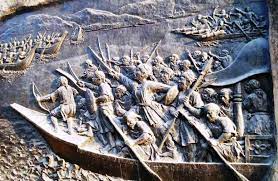For first 300 yrs of their history, Ahoms were more Thai than Indian. Here’s how they changed

Last year, I saw with great interest the Assam government’s advertisements all over Delhi, casting the Ahom general Lachit Borpukhan as a Hindu warrior who defeated “Muslim invaders”. This portrayal of India’s Northeast as fundamentally Hindu has continued into the recent past—especially in Manipur, where online campaigns have sought to paint Kukis as “Christian terrorists”.
The history of the Ahoms is more complex than what Assam’s ruling party claims. Understanding their rise to power brings up challenging questions about immigration, religion, and “Indianness”. As we’ll see, through much of their history, the political culture of the Ahoms had much more in common with their neighbouring Thais than with the ancient Sanskritised kingdom of Kamarupa, whose territories they assimilated.Parallel histories in Northwest and Northeast
In last week’s Thinking Medieval, we traced the rise and fall of the Kamarupa kingdom. Kamarupa, based in the Lower Brahmaputra Valley, deftly presented itself as both Sanskritic and intertwined with the indigenous populace. By the 13th century CE, it had collapsed in the wake of regional crises, creating a power vacuum. Raiding attempts by Turks were driven off by local lords. During this political void, the Tai-Ahoms, an offshoot of the Mao-Shan peoples of Upper Burma, marched into the Upper Brahmaputra Valley. Meanwhile, two other tribal confederations came to rule in the erstwhile Kamarupa kingdom—the Khens, probably from Burma, and the Koches, hailing from the Bhutan foothills.
These groups illustrate the dynamics of late medieval Northeast India—a crossroads akin to Northwest India. Just like the Northwest, the Northeast was never static, witnessing constant migration, invasion, assimilation, and innovation. In one of the strangest examples of parallels in history, the infamous Turkic raider Bakhtiyar Khalji, writing on his failed expeditions in Assam, remarked in the Iabaqat-i-Nasiri that these tribal groups “all have Turk countenance”. Ethnically, culturally, and religiously, they were a world apart from what we imagine as “Hindus” today.
















